In Japan, plummeting university enrollment forecasts what's ahead for the US
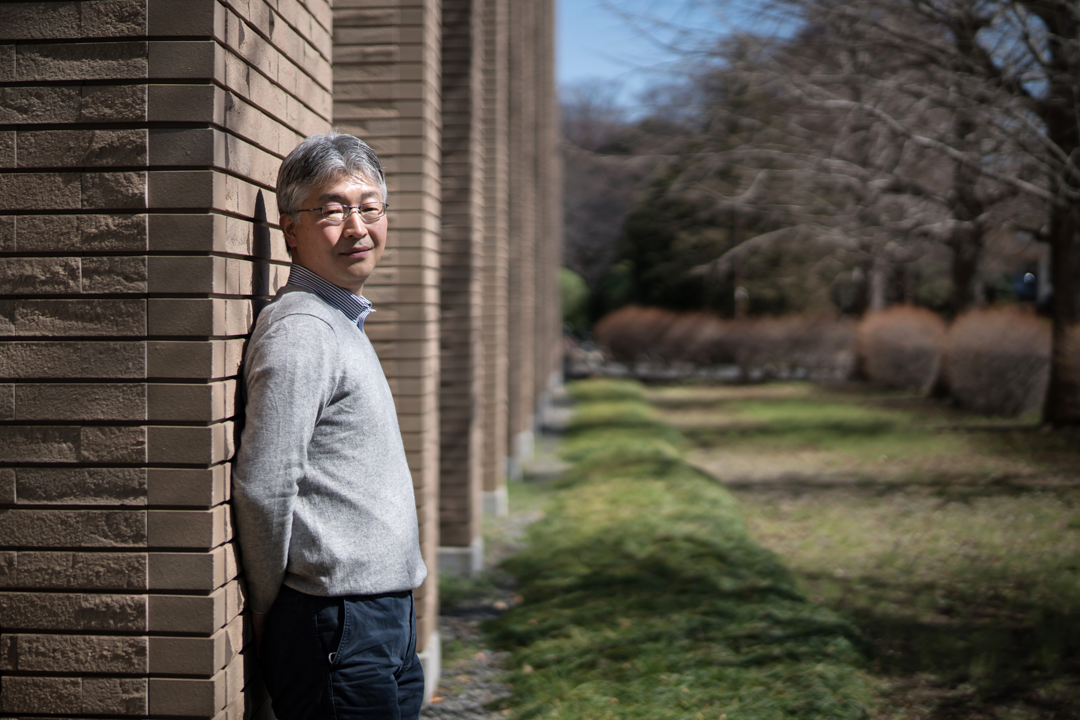
Tomohiro Ohsumi // The Hechinger Report
In Japan, plummeting university enrollment forecasts what’s ahead for the US
A man stands leaning against the wall of a building.
TOKYO — The campus of International Christian University is an oasis of quiet in the final week of the winter term, with a handful of undergraduates studying beneath the newly sprouting plum trees that bloom a few weeks before Japan’s familiar cherry blossoms.
The colors of nature are abundant in this nation in the spring. But after decades of a falling birthrate, it has far too few of another important resource: college students like these.
The number of 18-year-olds here has dropped by nearly half in just three decades, from more than 2 million in 1990 to 1.1 million now. It’s projected to further decline to 880,000 by 2040, according to the Japanese Ministry of Education, Culture, Sports, Science and Technology.
That’s taken a dramatic toll on colleges and universities, with severe consequences for society and economic growth — a situation the Hechinger Report finds is now also being faced by the United States, where the number of 18-year-olds has begun to drop in some states and soon will fall nationwide.
Image caption: Yushi Inaba, a senior associate professor of management at International Christian University in Tokyo who studies the effects of Japan’s declining population. What’s happening in Japan can offer “clues and implications” for U.S. universities and colleges, Inaba says.
![]()
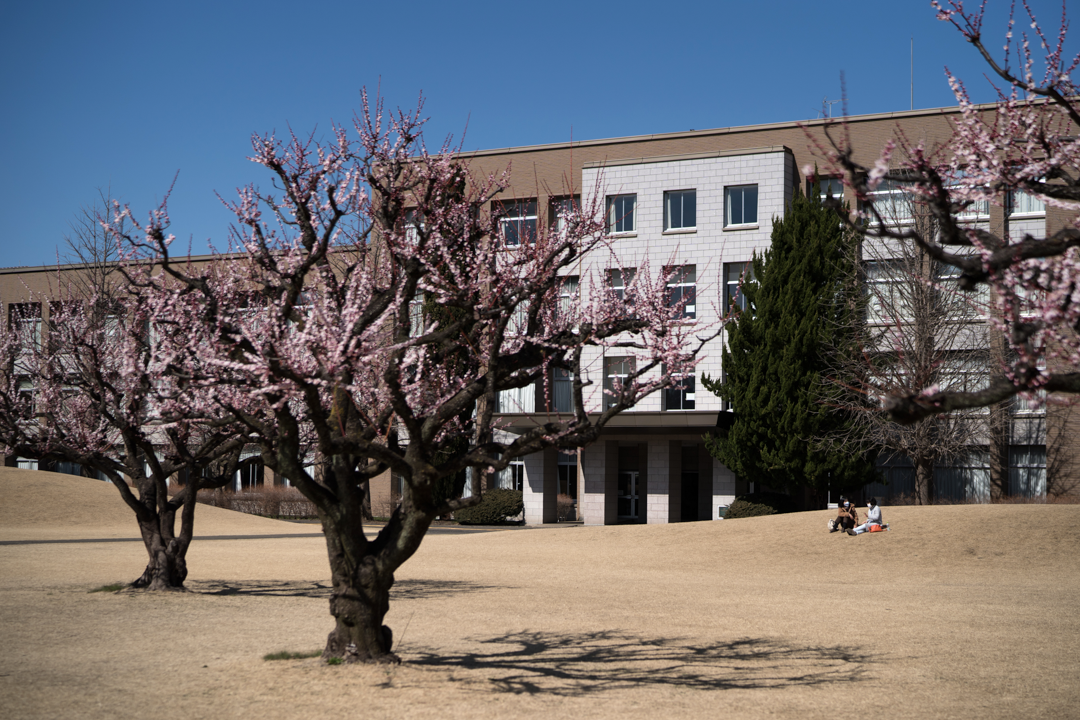
Tomohiro Ohsumi // The Hechinger Report
What’s happening in Japan offers lessons for the US
A large building with flowering trees in the foreground.
What’s happening in Japan can offer “clues and implications” for U.S. policymakers and employers and for universities and colleges already beginning to contend with their own steep drops in enrollment, said Yushi Inaba, a senior associate professor of management at International Christian University, or ICU, who has studied the phenomenon.
The most significant of those implications, based on the Japanese experience: a weakening of economic competitiveness at a time when international rivals such as China are increasing the proportions of their populations with degrees.
“Policymakers and industry leaders are really facing a sense of crisis,” said Akiyoshi Yonezawa, professor and vice-director of the International Strategy Office at Tohoku University in Sendai, who has studied the economic ramifications of the decline in Japan of people of university age.
The onset in the 1990s of “shoushikoureika,” or the aging of Japan’s population, coincided with the start of a recession here that the Japanese call “the lost 30 years.” Now the International Monetary Fund, or IMF, projects that under current demographic trends, the Japanese gross domestic product will continue to decline in each of the next 40 years.
To help drive growth, some Japanese businesses are moving operations abroad and recruiting university-educated foreign workers, another study, by Yonezawa, found.
That’s not only because of the population decline; it’s also a result of Japanese universities significantly lowering their standards to fill seats. Where the average proportion of applicants accepted in 1991 was six in 10, Japanese universities today take more than nine out of 10, the education ministry says.
“It’s easier to enter, easier to graduate,” said Yonezawa. “There are doubts that students really get the necessary skills and knowledge.”
Even with declining selectivity, more than 40 percent of private universities here — there are 603, along with 179 publics — aren’t filling their government-allocated enrollment quotas.
After a decades-long head start, Japan is also something of a laboratory for solutions to the problem of falling numbers of university students — though the results so far suggest that there are limits to how much can be done to fix this problem.
Japan’s population of 126 million is projected to shrink by more than a quarter in the next 40 years, according to the IMF.
While the numbers in the United States aren’t as dire, they are headed in the same direction, and with increasing speed.
The U.S. birthrate — the number of live births per 1,000 women — has been falling steadily, the National Center for Health Statistics reports. The total number of births declined in nine of the 10 years of the 2010s and dropped even more sharply in 2020, before inching up by 1 percent in 2021, according to provisional estimates.
Image caption: University Hall, the main lecture building at International Christian University. Formerly part of the Nakajima Aircraft Company, the building houses classrooms and the Institute for Educational Research and Service.

Tomohiro Ohsumi // The Hechinger Report
Unprecedented slide in US college enrollment
People’s hands point at a chart.
This is projected to worsen an already unprecedented slide in U.S. college and university enrollment, which fell by more than 11 percent, or 2.4 million students, from 2010 through this year. There will be a 10 percent drop in the number of high school graduates from 2026 to 2037, according to the Western Interstate Commission for Higher Education. Other forecasts put the coming decline in the number of 18-year-olds at more than 15 percent.
Even with the worst of these demographic downturns a few years in the future, the existing enrollment decline has already affected American colleges and universities in ways that are eerily similar to what Japanese universities have been experiencing, including by triggering closings and mergers — especially of small regional institutions.
At least 11 universities in Japan shut down from 2000 to 2020, and there were 29 mergers, compared to only three in the 50 years before that, research by Inaba found. Yet another, Keisen University in Tokyo, announced last month that it will close as soon as its current students have graduated, citing the continuing decline in the number of 18-year-olds.
Most vulnerable have been small private universities in rural areas with low “hensachi,” or rankings based on selectivity and graduates’ job success.
“There are definitely too many universities” for the shrinking number of students, said Inaba.
This has worsened a divide in Japan that’s also widening in the United States: between rural areas and cities. Young people in Japan are abandoning rural places in droves, in favor of big cities such as Tokyo; there’s little evidence of the aging of the population in Tokyo’s Shibuya shopping district or the Shinjuku neighborhood of all-night restaurants and bars that teem with young people.
Because of this migration, “you will have fewer workers with university degrees [in rural areas] while the urban population is becoming larger,” Yonezawa said.
Image caption: A chart, in Japanese, showing the continuing decline of the number of 18-year-olds in Japan, which has dropped by nearly half in three decades and is projected to further decline to 880,000 by 2040.
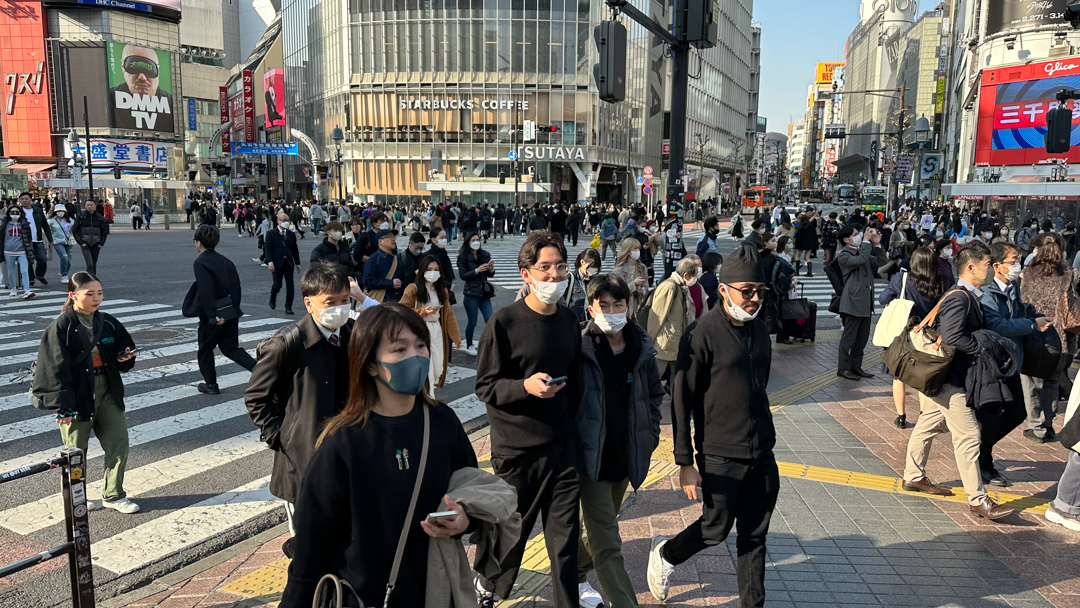
Jon Marcus // The Hechinger Report
Rural universities making cuts to offerings
Crowds on a street.
The exodus of university-educated people has so reduced the number of workers with degrees in rural Japan that some rural prefectures have stepped in and taken over failing universities to keep them open.
In the United States, too, fewer people living in rural areas than urban ones have higher educations — 21 percent, compared to 35 percent in cities, according to the U.S. Department of Agriculture, a gap the Federal Reserve reports has tripled since 1970 — aggravating social, economic and political divides.
Rather than shoring up the opportunities available to rural students, however, and maintaining a supply of local graduates, many rural universities in the U.S. have been making huge cuts to the number of programs and majors they offer.
There’s been a particular toll in Japan on “tanki daigaku,” or junior colleges. Just like American community colleges, to which they’re roughly equivalent, Japanese junior colleges have borne the bulk of the enrollment decline; 267 of them closed or merged between 1996 and 2018, out of a total of 598.
Many students in Japan who once would have gone to junior colleges — especially women, for whom more professional opportunities requiring four-year degrees have opened — are choosing instead to enroll at four-year universities. That’s one thing that has so far kept their enrollment from declining more than it has.
Another: While the number of 18-year-olds is falling, the proportion pursuing higher education has increased to 81 percent.
That’s much higher than the 62 percent of American high school graduates who the Bureau of Labor Statistics reports go directly to college. And rather than going up, as it has in Japan, the ratio of U.S. high school graduates heading straight to college has been going down, from a high of 70 percent in 2016.
Image caption: Crowds of people in Tokyo’s Shibuya neighborhood. As Japan’s population ages, young people are abandoning rural areas for cities, worsening an urban-rural divide.
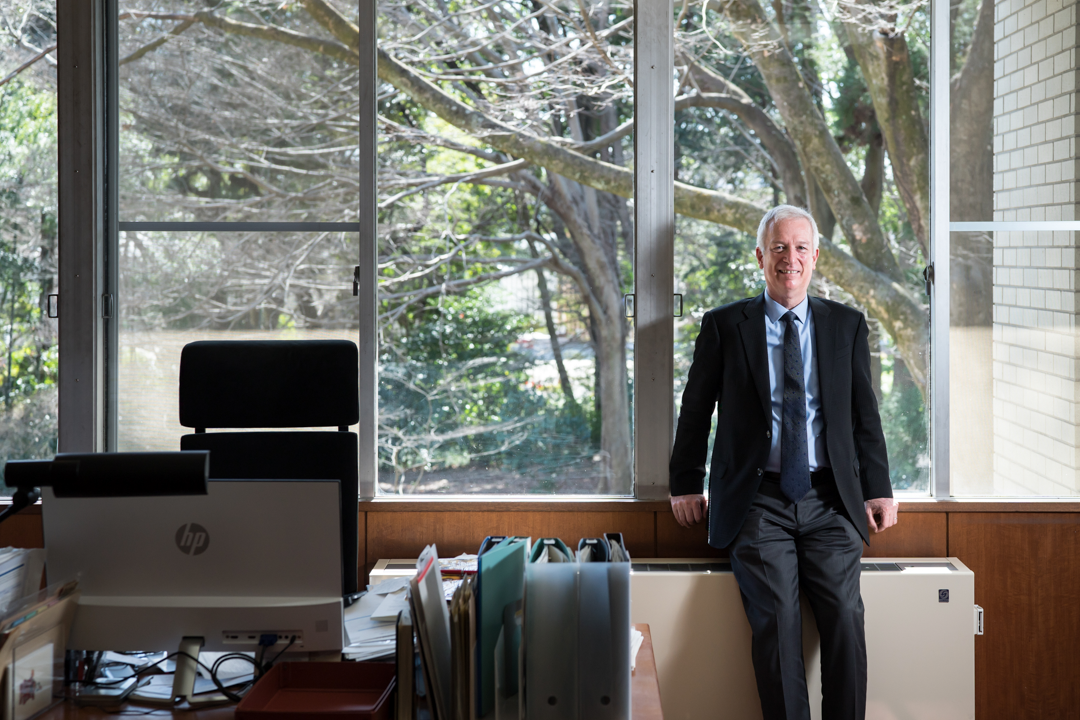
Tomohiro Ohsumi // The Hechinger Report
Universities in Japan hit turning point
A man stands in an office.
Japanese universities have now reached an inflection point, said Robert Eskildsen, vice president for academic affairs at ICU. The proportion of 18-year-olds who go to college likely can’t go higher, and there aren’t many prospects left to steal away from junior colleges.
“What’s going to happen next is that the universities are going to start feeling this pain,” Eskildsen said over tea with colleagues in his office on the pastoral campus in western Tokyo, a fanciful print of a kabuki performer on the wall.
Image caption: Robert Eskildsen, vice president for academic affairs, in his office at International Christian University in Tokyo. After three decades of declining population in Japan, Eskildsen says, “enrollments are about to start a long decline.”
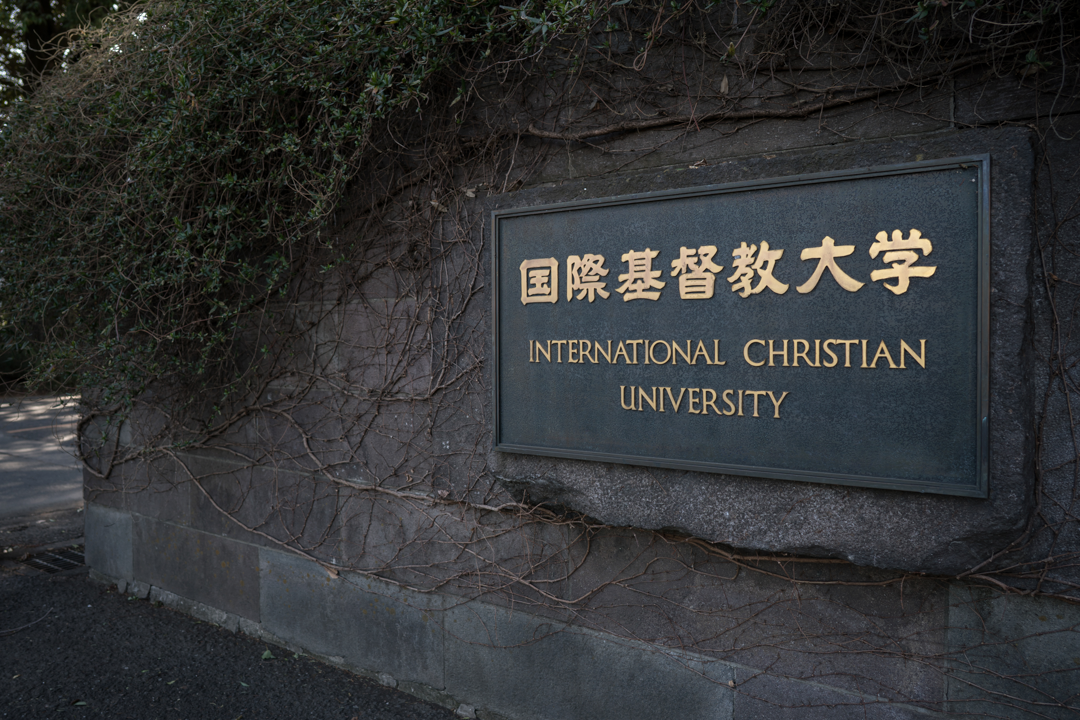
Tomohiro Ohsumi // The Hechinger Report
Japan universities tapping into niches
A sign reads International Christian University.
A nondenominational institution built in 1949 on the former grounds of a manufacturer of aircraft for the military, ICU is highly ranked and remains among the country’s most selective universities, with one of the top hensachis. It teaches in both Japanese and English, attracting not only Japanese students who want to work in jobs increasingly requiring competence in English but also the children of Japanese nationals who have been living abroad and need to improve their Japanese.
Finding niches like those — teaching in English, for example, or adding subjects such as animation, marketing and international management — is another way some Japanese universities are contending with their shrinking market, said Inaba.
Where in the United States it can take years to start new programs, Japanese universities are quick to respond to employer and student demand for disciplines like these, said Yoshito Ishio, a sociologist and dean of ICU’s College of Liberal Arts. That’s because they need applicants so badly. “They’re faster to change because it matters more,” Ishio said.
Image caption: The entrance to International Christian University. Opened in 1949 on the former grounds of a manufacturer of aircraft for the military, ICU is one of the country’s most selective universities.
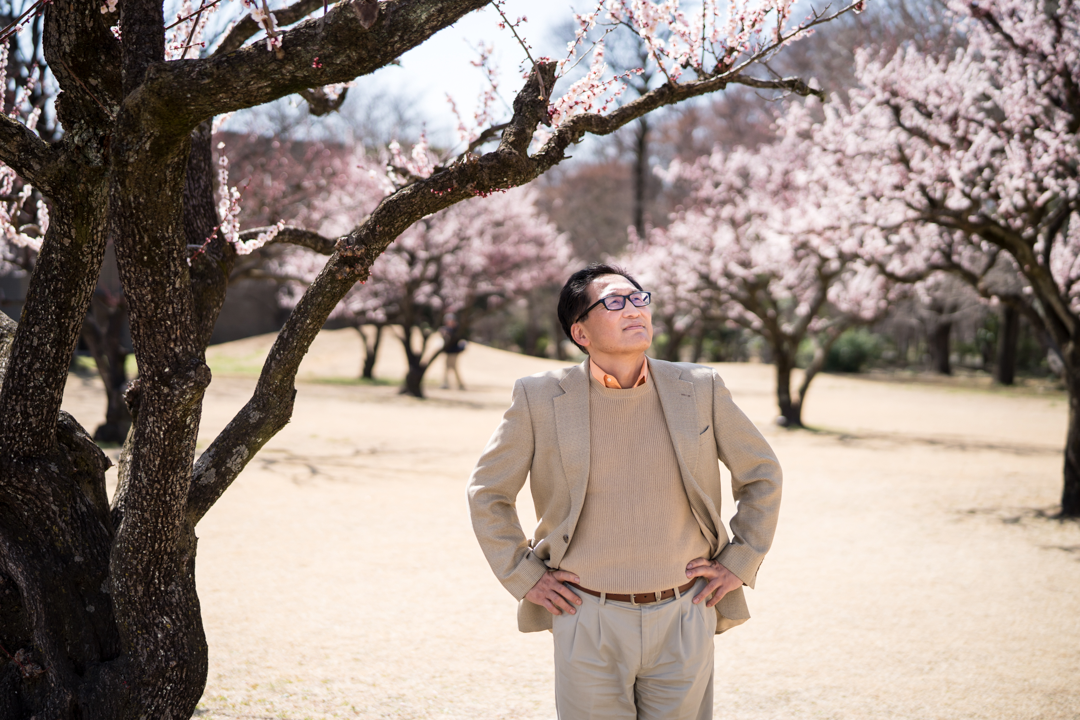
Tomohiro Ohsumi // The Hechinger Report
Japan struggling to attract international students
A man stands under flowering trees.
The universities have also expanded once small-scale partnerships with high schools to create a dedicated pipeline of prospective students who get preference in admission without having to submit to university entrance exams.
The proportion of students now admitted this way has grown since 2000, from 10 percent to 12 percent at public and 37 percent to 44 percent at private universities, according to the education ministry.
Other efforts to close the enrollment gap have met with less success. It’s hard to attract international students to Japan, for instance, because of the language difficulty and competition from other countries.
Fewer than 3 percent of four-year undergraduate students in Japan were foreign nationals before Covid-19, when border restrictions vastly reduced that number, the education ministry reports.
Image caption: Yoshito Ishio, dean of the College of Liberal Arts at International Christian University.
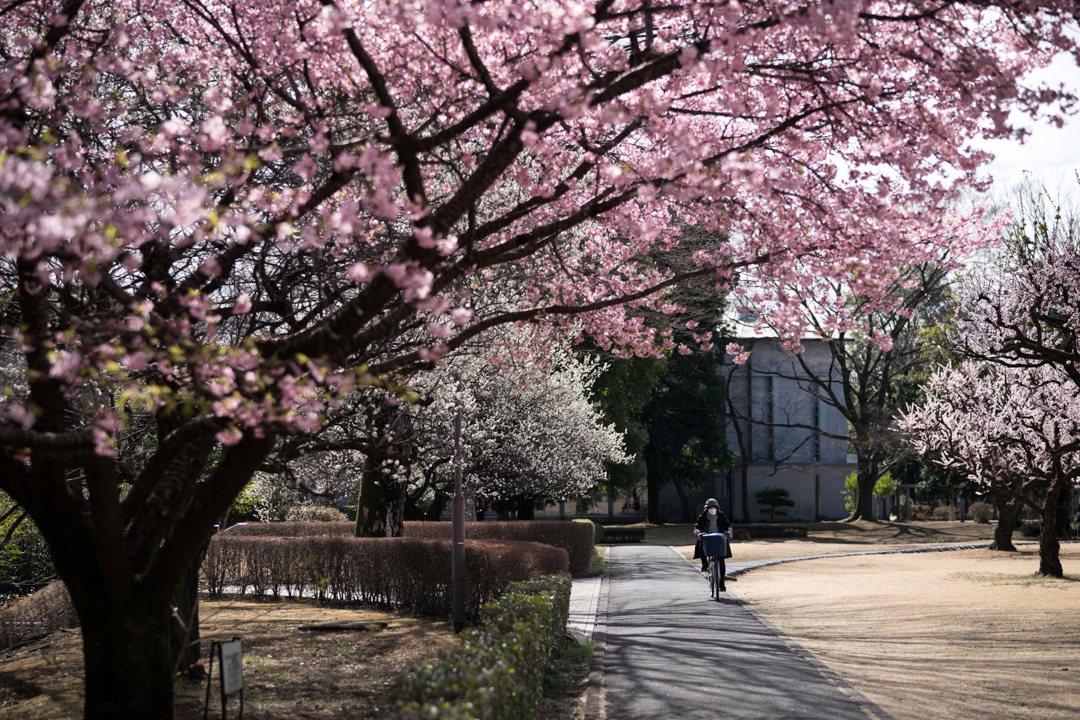
Tomohiro Ohsumi // The Hechinger Report
Warning signs for US universities
A bicyclist pedals beneath flowering trees.
There are warning signs about international students for U.S. universities, too. Even before Covid, the number coming to the United States was flattening out, according to the Institute of International Education. And while it rebounded slightly last year after plummeting during the pandemic, there are now concerns about the diminishing flow of students from the most important sending nation: China.
Immigration, which could help boost the number of students in college, is also almost nonexistent in Japan, where immigrants comprise about 2 percent of the population, according to the Immigration Services Agency. It’s way down in the United States, too, the Census Bureau says.
Both countries are about to share an unwelcome reality, Eskildsen said.
In the face of Japan’s longstanding shoushikoureika, its universities have so far maintained their enrollment “by reducing their competitiveness and by squeezing junior colleges out of business. But those strategies are close to their limits,” just as U.S. universities are facing similar threats.
Now, Eskildsen said, “enrollments are about to start a long decline.”
Image caption: A student bicycling under the plum trees on the campus of International Christian University in Tokyo.
This story was produced by The Hechinger Report and reviewed and distributed by Stacker Media.